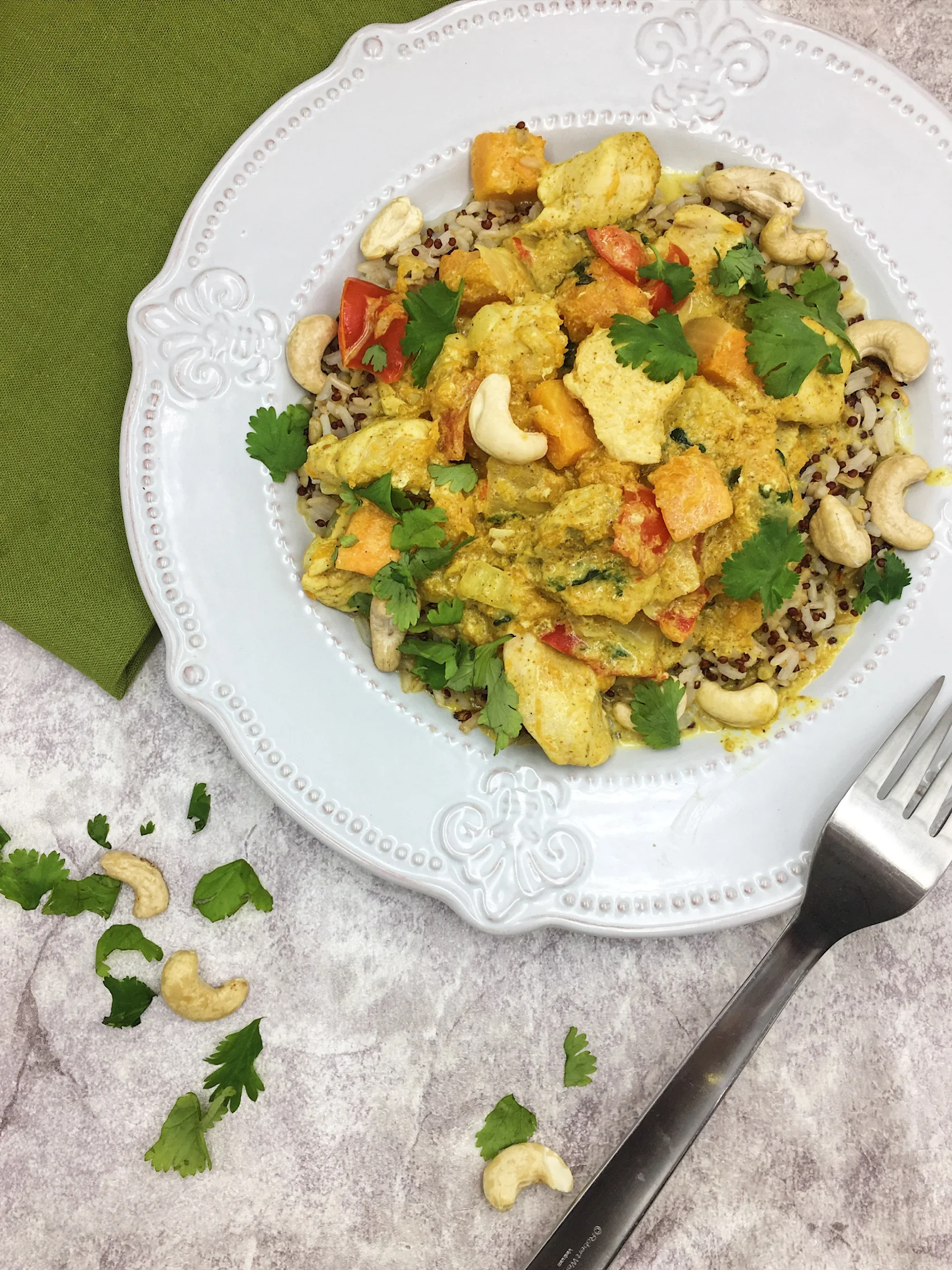Glyphosate: What is it and how can we avoid it?
Dr. Zach Bush, a triple board certified physician and scientist states that in his lab, “The amount of glyphosate estimated in one slice of conventional pizza (10 ppm) – in addition to the gliadin protein from the gluten in the crust – begin to degrade human intestinal tight junction tissue in cell culture almost immediately upon contact.” Intrigued? Read on.
Here is the new “ingredient” that everyone (parents especially) need to know about
What do cheerios, goldfish, and nutrigrain bars all have in common? Besides being very common “healthy-sounding” choices for meals or snacks, they are also among the many wheat, soy, and corn-based products sprayed with the chemical, glyphosate.
Glyphosate (N-(phosphonomethyl) glycine) is one of the most commonly used herbicides in our world today and is used in farming methods in the United states and beyond. This roughly 40-year-old precarious substance is still currently being sold under the brand name Roundup in most gardening and home improvement stores for general purchase, despite...shall we say..bad press? (NOTE- since writing this post, it looks like some kick butt health advocacy has convinced Bayer to pull this product off the markets to sell to consumers directly, (which is awesome), yet it will no doubt still be circulating through our food system. )
Glyphosate is water-soluble, and reaches the groundwater from the runoff from the farms and travels into larger rivers and into the ocean. Glyphosate in the air we breathe, and eventually in the rain that falls.
The large scale use of this herbicide has created worldwide concerns regarding its safety. In fact in 2015, the World Health Organization reclassified glyphosate as “probably carcinogenic to humans.”
Literature surrounding glyphosate is collecting attention from the medical and scientific communities for its cumulative toxic effects on humans.
Coined the “weed-killer”, it’s found in most of our most widely used crops in the United States including wheat, corn, and other government subsidized crops. Wheat and corn are also the main ingredients in our processed foods. And though it’s not sprayed directly into our hands, it remains ubiquitous since chronic, ultra-low doses are now directly related to accumulation of poisonous compounds in the environment. Extensive glyphosate use has now led to a profusion of glyphosate-resistant weeds and microorganisms.
Health concerns and the microbiome
Researchers also hypothesize that this “glyphosate-resistance” in bacteria could lead to shifts in microbiome composition causing an increase in antibiotic resistance to clinically important antimicrobial agents. This can potentially set us up for a healthcare disaster. More research is now recommended on the associations between low level chronic glyphosate exposure, effects on microbes, antibiotic resistance, and disease prevalence among humans, plants, and animals.
There is a protein that resides in our gut called the ZO-1 which represents the tight junctions, or glue that holds the intestinal cells together. It’s critical to all the cellular barriers in the body including the blood-brain-barrier, kidney tubules, and blood vessel tree. This single protein structure is vital to keep these barriers in the body unharmed, but when Roundup is consumed, the tight junctions are ultimately destroyed.
Recent research is linking glyphosate to a slew of cancers, neurological disorders like autism, parkinsons, diabetes, and cardiovascular disease due to its disruption of natural enzymes which causes interference in cellular function.
Glyphosate is currently, or will be banned in several different countries including Germany and Vietnam. Oman’s Ministry of Agriculture along with six other Middle Eastern countries, including Saudi Arabia, Kuwait, the United Arab Emirates, Qatar, and Bahrain, have banned the use of glyphosate herbicides since 2016, after reviewing IARC’s classification of glyphosate as a ‘probable human carcinogen’.
So why won’t the United States EPA ban glyphosate?
It seems for the same reasons tobacco wasn’t banned in a timely manner despite the plea from scientific and medical communities upon knowledge of its connection to cancer and other illnesses.
Yet our EPA (Environmental Protection Agency) has recently claimed that glyphosate is “unlikely” to cause cancer and “no risks of concern to human health” when used according to its label.
One of the determining factors that yielded this conclusion was non-peer reviewed research conducted by Monsanto themselves. Five words can accurately answer the question above. Still. Money. To. Be. Made.
Let the lawsuits pour in
If you watch television after 9pm you’ll often see the commercial recruiting cases for a lawsuit against Monsanto (former producer of these pesticides, now owned by German chemical company Bayer) for the connections between Roundup and Non-hodgkin Lymphoma. Several more lawsuits have joined the party as more than 100,000 plaintiffs have piled up.
Overall, I believe glyphosate perfectly illustrates how divorced we are as a nation to having a biological connection to nature beginning with the food we eat. This has no doubt resulted in catastrophic consequences.
But my hope is that nutrition educators like ourselves and all the practitioners in the integrative health care industry can serve to educate people. Whether through group talks, social media (since it can be good for some things), blogs/websites, all the way down to our one-on-one patients/clients. As long as big agriculture and big pharma are hand-cuffed, it really will be up to us to spread the word on the state of our food system so that the people can then dictate what’s to be done.
But in the meantime, there’s something we can do!
If there’s one thing you take away from this post, let it be this. We as consumers have more power than we think, and if I food we purchase isn’t supporting the health of our families, we shouldn’t buy it. Instead, vote with your dollar and support foods with real ingredients and full transparency.
According to The Detox Project
GM crops accounted for 45.2% of the total global glyphosate demand in 2012. (1)
94 % of the soybeans and over 80 % of the corn and cotton grown in the United States are glyphosate-tolerant GM crops. (2)
Glyphosate-tolerant GM crops represent more than 80% of the 120 million hectares of GM crops grown annually worldwide. (3)
The global glyphosate herbicides market was valued at USD 5.46 billion in 2012 and is expected to reach USD 12.54 billion by 2024. (4)
Purchase organic
(Especially for wheat, soy, and corn-based products)
It’s up to us as consumers to be true detectives when it comes to everything we purchase. GMO’s, pesticides, and growth hormones are prohibited with the organic label. For this reason, I advise my clients to purchase organic whenever possible. Check out the EWG’s dirty dozen for the most important foods. Though organic foods may still contain traces (remember the stuff is everywhere), the load will certainly be less.
Explore regenerative agriculture
And get to know what it’s all about since it is the next “hot thing”. Documentaries like Kiss the ground and Biggest little farm are great ways to get educated on the topic as websites like Rodale Institute and Farmer’s Footprint. These websites are not only ways to learn about real food and the soil, but ways you can get your communities involved and help save the planet for our children. (cuz you know….that’s kind of a big deal).
Protect your Gut
Since glyphosate knows how to interfere with the gut lining, we react with the best defensive barriers we can find.
Probiotic supplements as well as probiotic-rich foods (full-fat yogurt, sauerkraut, pickles, kombucha, kimchi) These add more “good guys” to help regenerate gut flora. I use a ton of different strains for myself and the kids since it’s very important to keep variety.
We also use gut lining support powders whenever we go outside the home to eat, or we’re having something we don’t eat often.
Gut lining powders contain glutamine as the main ingredient which helps to soothe and strengthen the lining of the intestinal tract. I like GI revive, Vital Nutrients GI repair, and Metagenics.
Drink purified water
We have a whole-house water filter and it was one of the best investments we’d ever made. Being these chemicals have found to be in high concentration at the end of river beds, it’s important to have water tested, not just for glyphosate, but high levels of fluoride, lead, or other contaminants. Ultimately you want a water filter that uses reverse osmosis +activated carbon or distillation + activated carbon to truly release chemicals.
On the go? Hey, no worries. We love the Steripen. It’s a battery operated water purifier that disinfects any water. Tap water in airports or in restaurants? No problem!
Avoid processed foods when possible
Preparing whole, single-ingredient foods will always be best (when you can swing it). When it comes to baked goods and snacks, all of the recipes on this website use wholesome ingredients, contain no white flours, and act to only nourish the body.
Here are a few you will love!
Disclaimer: This post includes affiliate links and products sold on this site including but not limited to nutritional supplements, ebooks, programs etc. which generate a tiny profit as the primary income of my blog at no additional cost to you. The greatest wealth is health so thanks for contributing!
References:
Van Bruggen AHC, He MM, Shin K, et al. Environmental and health effects of the herbicide glyphosate. Sci Total Environ. 2018;616-617:255-268. doi:10.1016/j.scitotenv.2017.10.309
https://www.sciencedirect.com/science/article/abs/pii/S0048969717330279?via%3Dihub
Saunders LE, Pezeshki R. Glyphosate in runoff waters and in the root-zone: A review. Toxics 2015;3:462–480. Crossref, Medline, Google Scholar
Bai SH, Ogbourne SM. Glyphosate: environmental contamination, toxicity and potential risks to human health via food contamination. Environ Sci Pollut Res Int. 2016;23(19):18988-19001. doi:10.1007/s11356-016-7425-3
https://link.springer.com/article/10.1007%2Fs11356-016-7425-3
Turner JR, Buschmann MM, Romero-Calvo I, et al. The role of molecular remodeling in differential regulation of tight junction permeability. Semin Cell Dev Biol 2014;36:204–212. Crossref, Medline, Google Scholar
Navdanya International: Poison-free communities bans restrictions and resistance against glyphosate and other pesticides: 2020
https://navdanyainternational.org/publications/glyphosate-bans-restrictions-across-the-world/
United States Environmental Protection Agency: Glyphosate
https://www.epa.gov/ingredients-used-pesticide-products/glyphosate
US-RTK Bayer/Monsanto Headache Persists: Oct 2020 https://usrtk.org/monsanto-roundup-trial-tracker/bayers-monsanto-headache-persists-settlements-not-going-smoothly/
Benbrook, C.M. How did the US EPA and IARC reach diametrically opposed conclusions on the genotoxicity of glyphosate-based herbicides?. Environ Sci Eur 31, 2 (2019). https://doi.org/10.1186/s12302-018-0184-7






